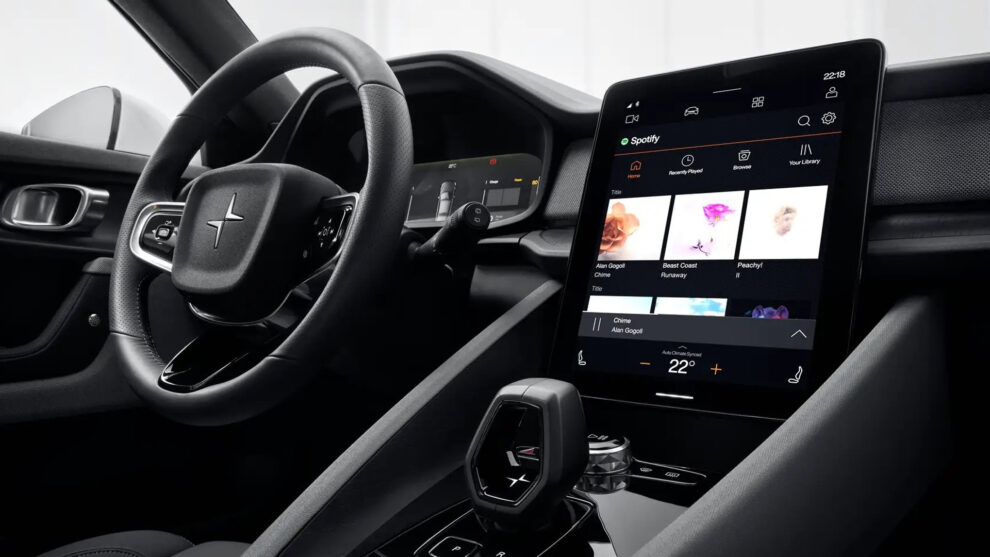For years, Android Automotive, Google’s dedicated operating system for cars, has lagged behind its smartphone counterpart in terms of app availability. But that’s all about to change. Starting in February 2025, Google is opening the floodgates with its “car-ready mobile apps” program, bringing a slew of new apps to vehicles equipped with Android Automotive. This means drivers can expect to see everything from video streaming services and web browsers to mobile games and productivity tools appearing on their car’s infotainment screens.
This shift marks a significant turning point for Android Automotive, potentially transforming the in-car experience. But it also raises important questions about driver distraction and safety.
What is Android Automotive?
Before we dive in, let’s clarify what Android Automotive is. Unlike Android Auto, which mirrors apps from your smartphone to your car’s display, Android Automotive is a complete, standalone operating system built directly into the vehicle’s hardware. This means it operates independently of your phone, offering deeper integration with the car’s systems, such as climate control, navigation, and vehicle diagnostics.
The “Car-Ready Mobile Apps” Program
Announced at Google I/O 2024, the “car-ready mobile apps” program aims to bring a wider selection of apps to Android Automotive. Google achieves this by adapting existing Android apps that are already compatible with larger screens, ensuring they meet specific safety and usability requirements for in-car use.
Key takeaways from the program:
- Launch Date: February 2025
- Eligibility: Apps must be compatible with larger screens and meet Google’s car-specific guidelines.
- Availability: Initially limited to cars with “Google built-in” certification.
- Android Auto Support: Coming later, with no confirmed date.
What Kinds of Apps Can We Expect?
While Google hasn’t released a definitive list of approved apps, we can anticipate a diverse range based on their announcements and the program’s focus on large-screen compatibility.
- Video Streaming: Imagine watching your favorite Netflix shows or YouTube videos while parked and charging your EV.
- Web Browsing: Access information, check email, or browse the web – all from your car’s dashboard (hopefully only when parked!).
- Gaming: Play casual games while waiting to pick someone up or during charging breaks.
- Productivity: Access work-related apps, take notes, or manage your schedule.
As someone who spends a considerable amount of time in my car, I’m both excited and apprehensive about this development. On the one hand, I welcome the added convenience and entertainment options. Having access to a wider range of apps could make long drives more enjoyable and even boost productivity during downtime.
However, I’m also concerned about the potential for increased driver distraction. I’ve seen firsthand how even a quick glance at a phone notification can be dangerous behind the wheel. Introducing more engaging apps into the car environment could exacerbate this issue.
Addressing the Safety Concerns
Google is acutely aware of the safety implications and has implemented measures to mitigate risks:
- Strict Guidelines: Apps must adhere to strict guidelines to minimize driver distraction. This includes limitations on interactive elements, video playback while driving, and notifications.
- “Google Built-in” Certification: Only cars that meet Google’s stringent requirements for “Google built-in” will be eligible for these apps, ensuring a certain level of safety and integration.
- Driver Responsibility: Ultimately, drivers bear the responsibility for using these apps safely and responsibly.
Despite these precautions, it’s crucial for drivers to exercise caution and prioritize safety. Here are some tips for using apps responsibly in your car:
- Familiarize Yourself with the Interface: Before hitting the road, take time to understand how the apps work and their limitations within the car environment.
- Limit Interactions While Driving: Avoid engaging with apps that require significant attention while the vehicle is in motion.
- Use Voice Commands: Utilize voice commands whenever possible to minimize manual interaction with the screen.
- Pull Over When Necessary: If you need to use an app that requires your full attention, pull over to a safe location.
The Future of Android Automotive
This expansion of the Android Automotive app ecosystem is a significant step towards a more connected and versatile in-car experience. As technology continues to evolve, we can expect even more innovative and integrated apps to emerge.
Imagine a future where your car seamlessly connects with your smart home devices, allowing you to control your lights, thermostat, or security system from your dashboard. Or perhaps apps that provide real-time vehicle diagnostics and maintenance reminders, enhancing safety and efficiency.
The possibilities are endless, and Google’s “car-ready mobile apps” program is just the beginning. However, it’s crucial to remember that technology should serve to enhance our lives, not endanger them. As we embrace these advancements, let’s prioritize safety and responsible use to ensure a positive and secure driving experience.




